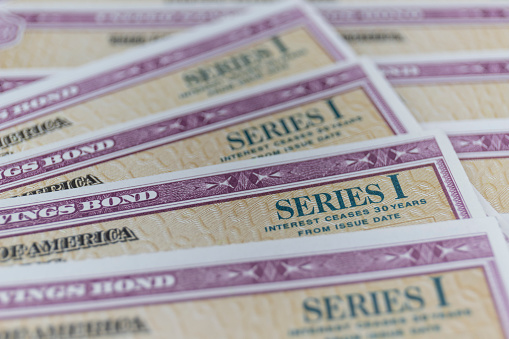How To Trade Bonds
Jan 02, 2024 By Triston Martin
Are you looking to start trading bonds but need help figuring out where to begin? Bond trading can be an intimidating prospect, as so many different types of bonds and markets are available. However, understanding the basics of trading bonds can open a world of possibilities.
Whether you’re interested in plain vanilla bonds or more complex structured products, we’ll provide an overview that explains the fundamentals so you have the knowledge and confidence needed to enter into bond trading with both eyes open. We'll explore some strategies to best approach bond trading, including identifying desirable characteristics for your investments and considering liquidity when selecting a market.
Bond Trading

Bond trading, or fixed-income trading, is the buying and selling debt securities in the secondary market. Governments or companies usually issue these debts with a specified interest rate and maturity date. Investors can profit from changes in bond prices due to changing investor sentiment or a shift in economic conditions.
Bond trading provides investors with diversification opportunities, higher yields than cash investments, and potential tax advantages over stocks.
How To Start Trading Bonds

The first step to getting started with bond trading is understanding the different types of bonds available for investment, such as Treasury bonds (T-bonds), municipal bonds (munis), corporate bonds (corps), agency bonds (agencies), and mortgage-backed securities (MBSs). Each type has its own risk levels, yields, and tax implications. Understanding the basic characteristics of each type can help you choose which one suits your investment goals best.
Once you’ve selected a bond type to trade, it’s time to identify a market to purchase or sell these securities. Bond markets are generally divided into primary and secondary markets. The primary market is where bonds are initially issued by governments and companies, while the secondary market deals with trading among investors after they have been issued.
It’s important to consider liquidity when selecting a market, as this will quickly influence bid/ask spreads and access to capital when buying or selling investments.
Different Types of Trading Bonds
When deciding which type of bond to invest in, there are a few key characteristics to consider:
- Credit quality: This refers to the creditworthiness of the issuer and its ability to pay back investors over the life of the security.
- Maturity date: Bonds generally have a long-term maturity date (typically ten years or more), so it’s important to consider when you need access to capital.
- Interest rate/yield: Some bonds offer higher yields than others, so understanding your options is key to finding the best bond for your portfolio.
- Tax implications: Depending on where you live, municipal bonds may be exempt from state and local taxes, while corporate bonds can be subject to taxation on both income and capital gains.
- Price volatility: Bond prices can fluctuate depending on the current economic environment, so understanding the risk potential is key.
Stories for Bond Trading
Once you better understand the different types of bonds and markets available to trade, it’s time to consider some strategies that can help you create an effective trading plan.
- Set attainable goals: Setting realistic goals can help focus your strategy and ensure your investments align with your expectations.
- Diversify your portfolio: As with any other type of investment, diversifying across asset classes and sectors can reduce overall risk while potentially boosting returns.
- Research thoroughly: Understanding the fundamentals behind each bond issuer and its prospects for repayment is essential when selecting the right bonds for your portfolio.
- Monitor changes in the market: With bond prices fluctuating constantly, it’s important to stay up-to-date on any changes that may affect the performance of your investments.
- Develop a trading plan: Creating and following a trading plan can help keep you disciplined and focused on achieving your investment objectives.
Following these strategies can build a successful bond trading portfolio that meets your needs and goals. Bond trading effectively diversifies your investments and accesses higher yields while managing risk through careful selection and research. You can become a successful bond trader with some practice, patience, and dedication.
Benefits of Trade Bonds
- Diversification: Investing in bonds allows you to diversify your portfolio, as they typically have lower risk than stocks while offering higher yields than other investments.
- Tax benefits: Many types of bonds, such as municipal and corporate bonds, offer tax advantages that can help reduce overall taxation on income and capital gains from bond trading.
- Risk management: Bond trading is an effective way to manage risk through careful selection and research of different issuers and their prospects for repayment.
- Trading options: Bonds give you various options for trading strategies, allowing you to choose the best approach with your goals and investment style.
- Long-term investment: Bonds are a great long-term investment, as they have longer maturities than other investments and can provide more stability in turbulent markets.
- Higher yields: Bond trading can offer higher yields than stocks and other investments, which makes them an attractive option for income investors.
- Liquidity: Bond trading also provides greater liquidity when it comes to buying or selling investments quickly, as the bid/ask spreads tend to be lower in bond markets.
By taking advantage of these benefits, you can create a successful bond trading portfolio that meets your individual needs and goals while reducing overall risk exposure in your investment portfolio. With some practice and dedication, you can become a successful bond trader and reap the rewards of trading bonds.
Drawbacks of Trade Bonds
- Interest rate risk: Bond prices are sensitive to changes in the overall interest rate environment, so understanding the potential for interest rate fluctuations is key.
- Credit risk: Bonds that companies and other entities issue carry a greater credit risk than government bonds with higher credit ratings.
- Inflation risk: If inflation rises faster than expected, bond values can decrease as investors look for more attractive investments with higher yields.
- Liquidity risk: The liquidity of certain bonds may be limited, especially those with longer maturities or lower trading volumes on the market.
- Taxation: Bond trading can be subject to taxation depending on the type of bond and jurisdiction, so it’s important to understand the potential tax implications before investing.
By being aware of these drawbacks, you can make more informed decisions regarding your bonds and reduce the risk of investing in them.
FAQS
How do you buy and sell bonds?
Bonds can be bought and sold through several channels, including broker-dealers, banks, and online trading platforms.
How much is a 1000 bond worth?
The value of a 1000 bond depends on the type of bond and the current market rate. Generally, bonds are priced at par, which is the bond's face value or principal amount but can fluctuate depending on prevailing interest rates.
How much interest do bonds earn?
The amount of interest a bond earns depends on the type of bond and the prevailing market rate. Generally, bonds earn more than savings accounts but less than stocks.
Conclusion
Taking the leap and investing in bonds is a great decision for those looking at different ways to diversify their portfolio. Educating yourself on how to trade bonds will help you to get the most out of your investment strategy, especially as market trends shift over time. If you still need to figure out how to approach trading bonds, seeking expert advice or speaking with a qualified financial advisor can provide further assistance.

Oct 20, 2023 Susan Kelly

Oct 06, 2023 Triston Martin

Jan 13, 2024 Triston Martin

Oct 26, 2023 Triston Martin

Dec 04, 2023 Triston Martin

Oct 21, 2023 Triston Martin